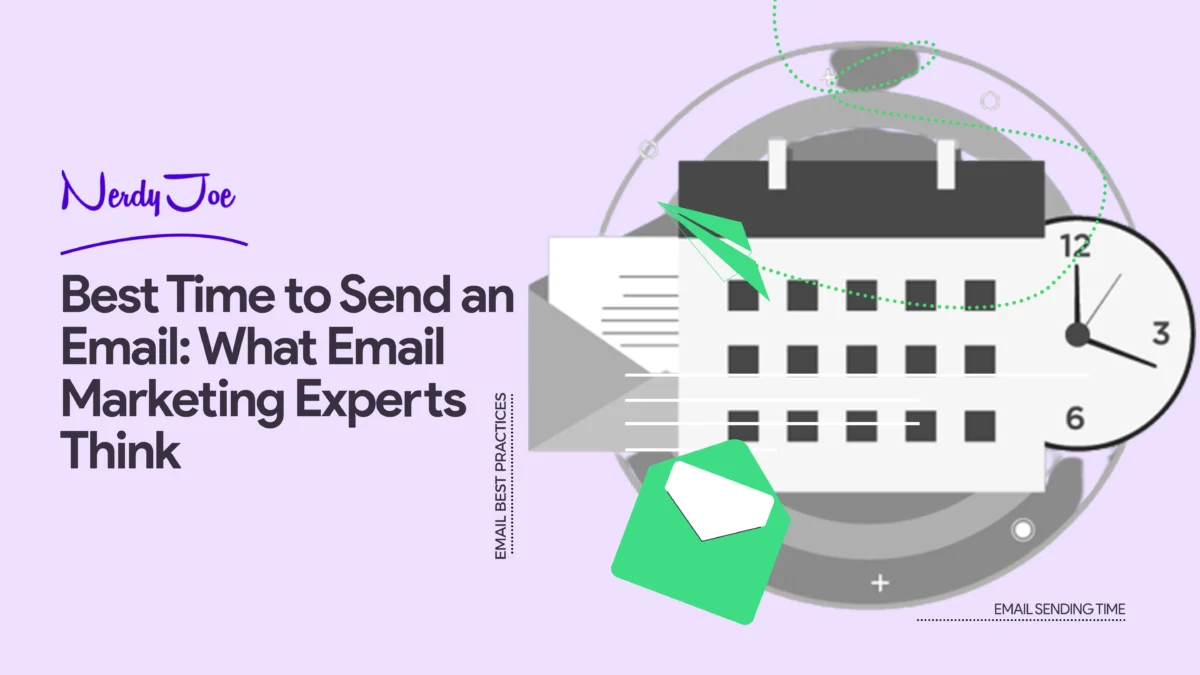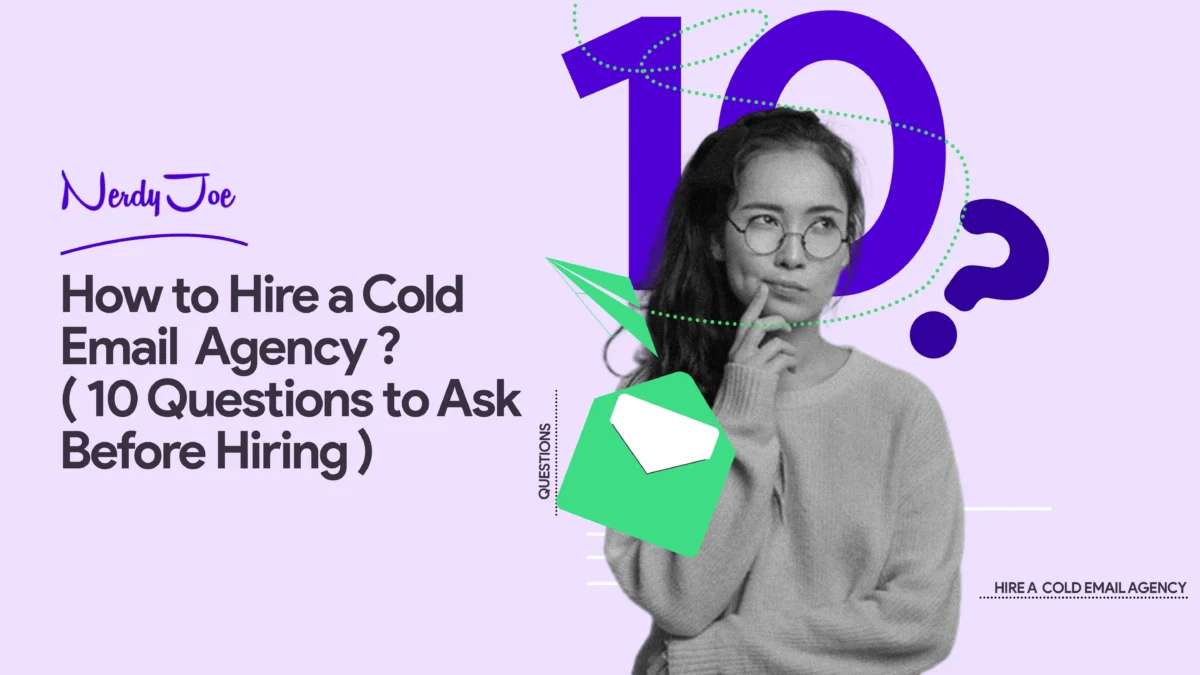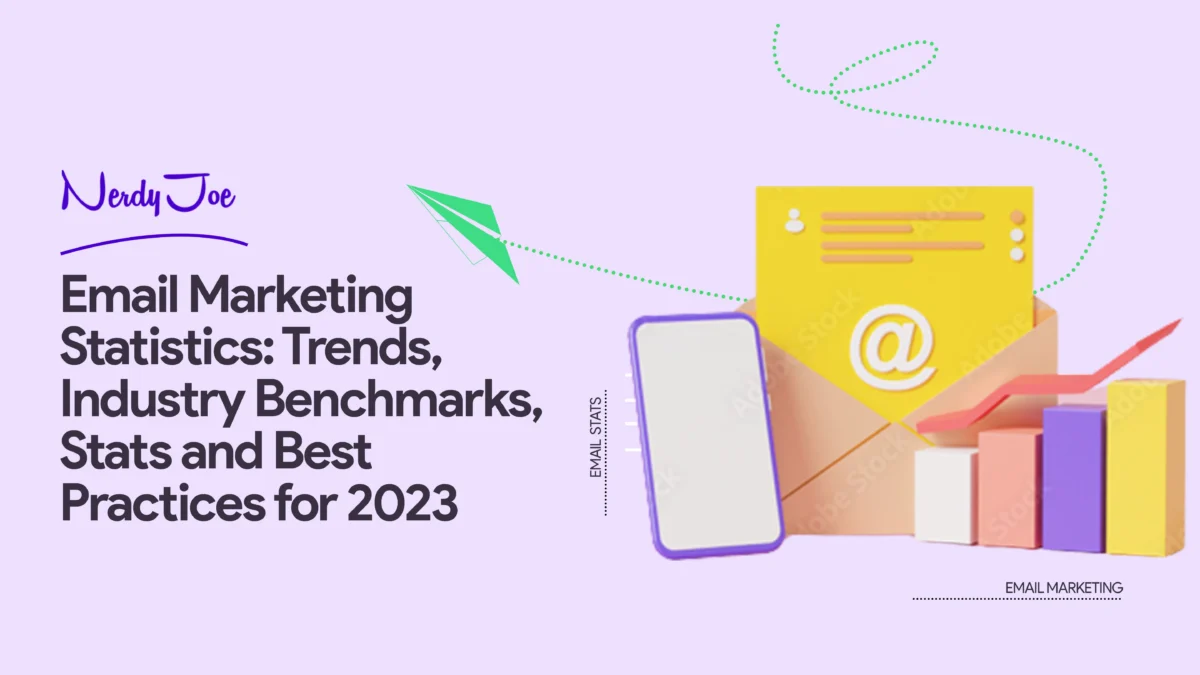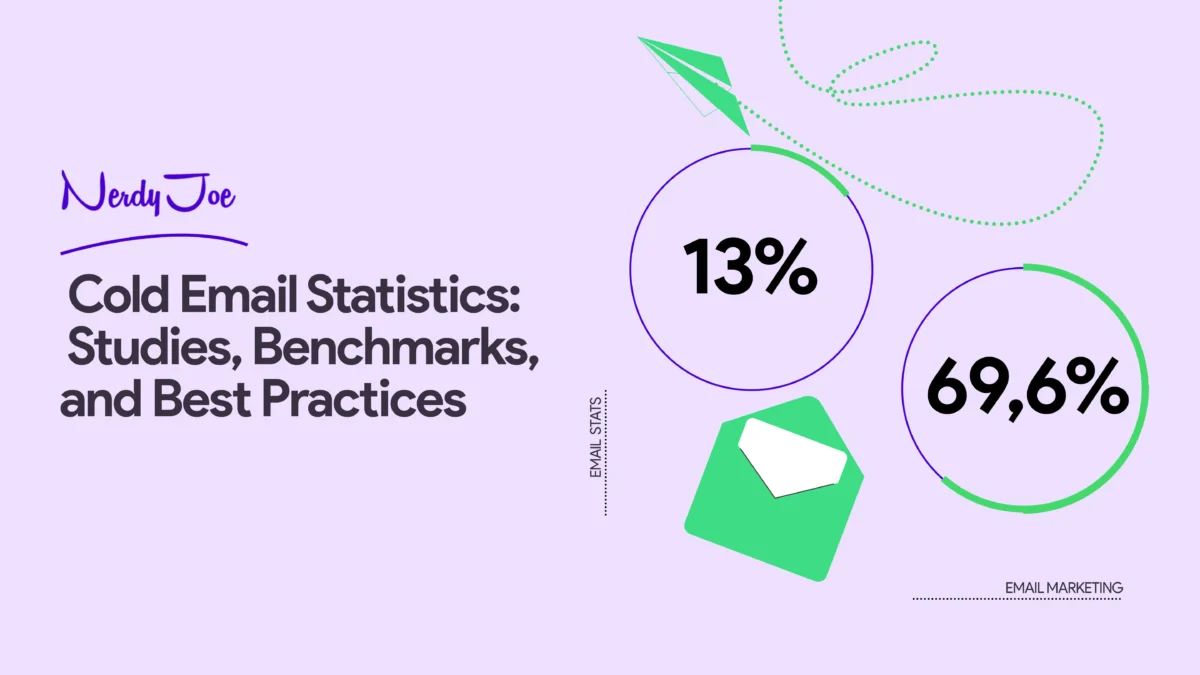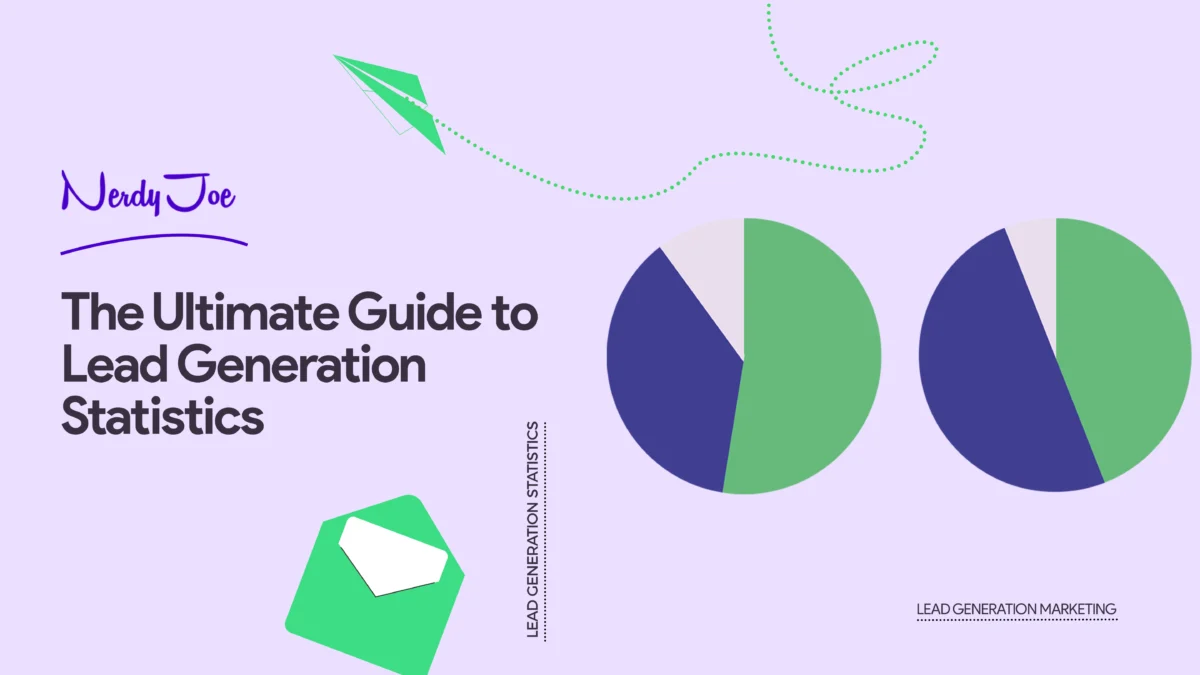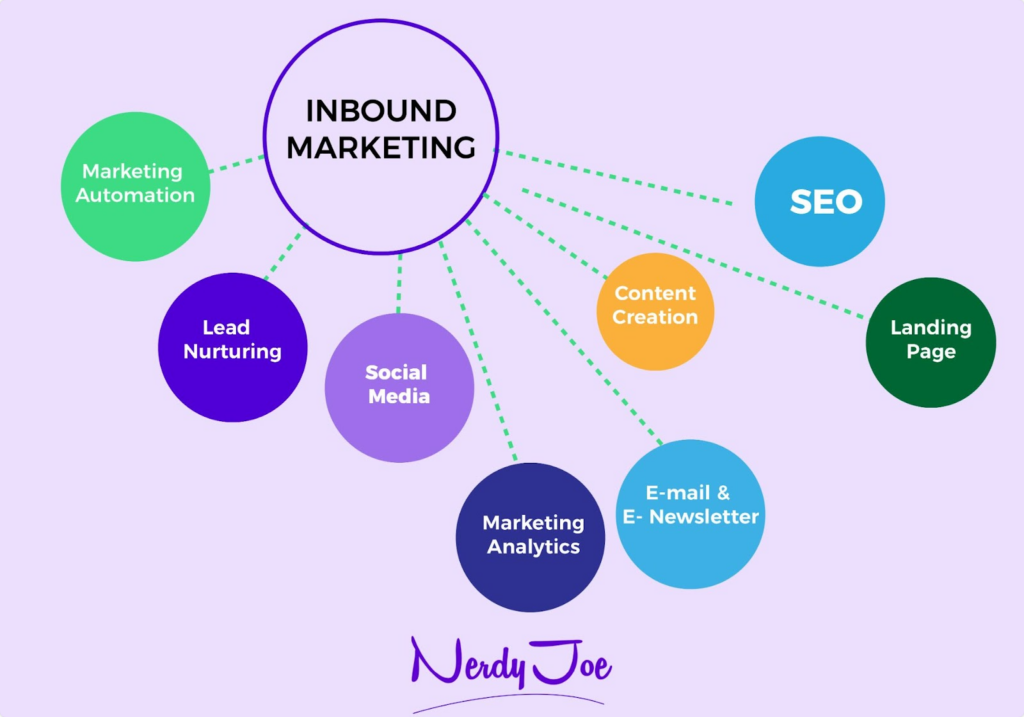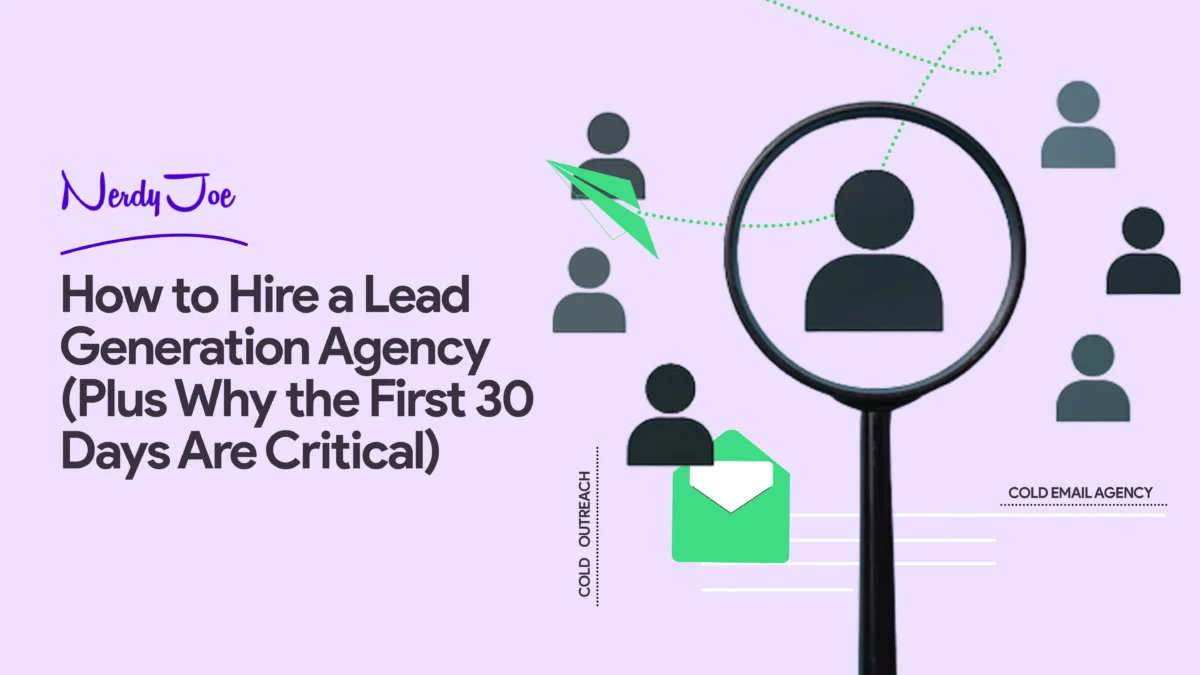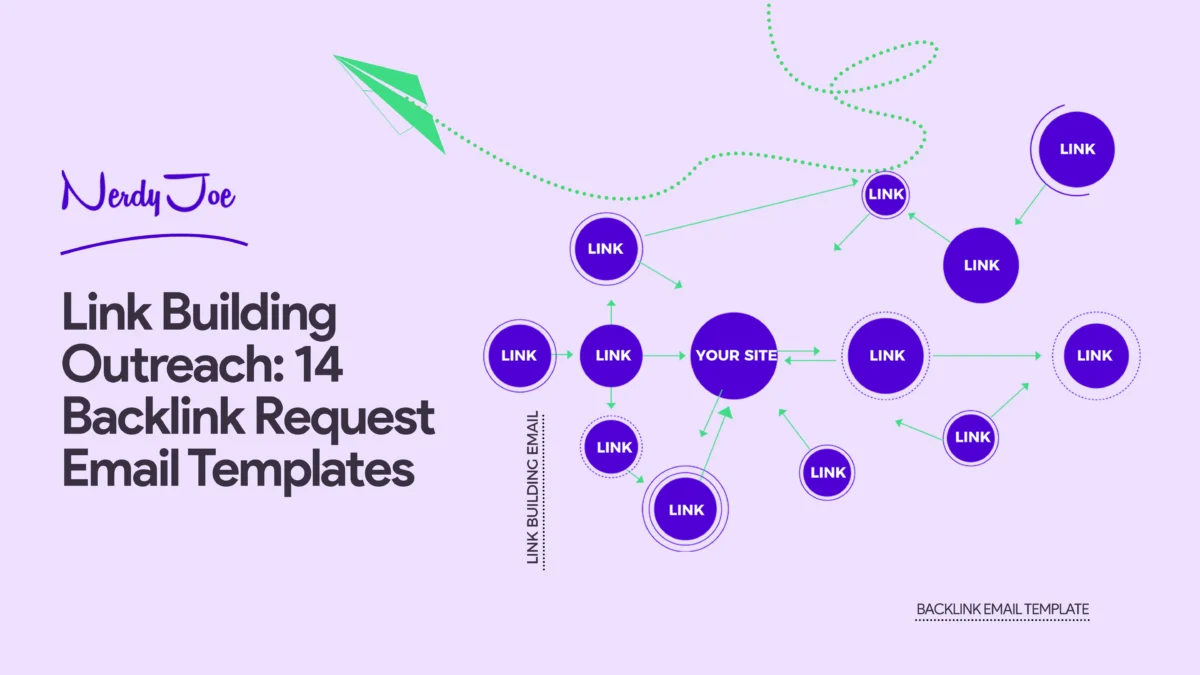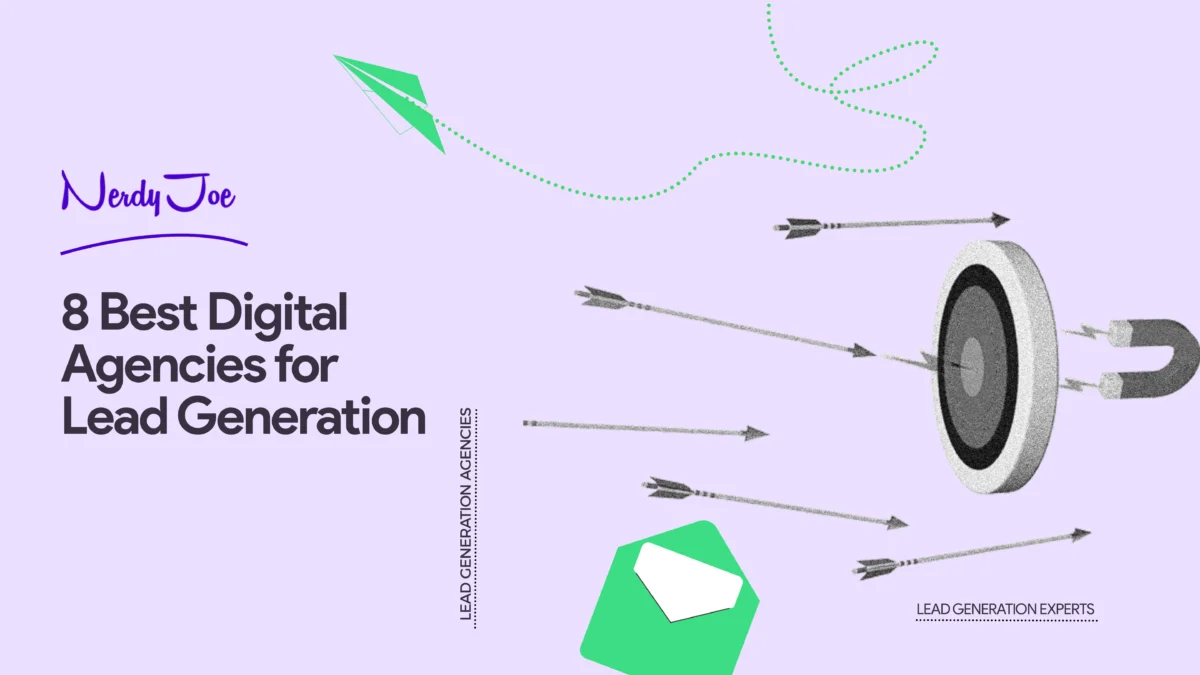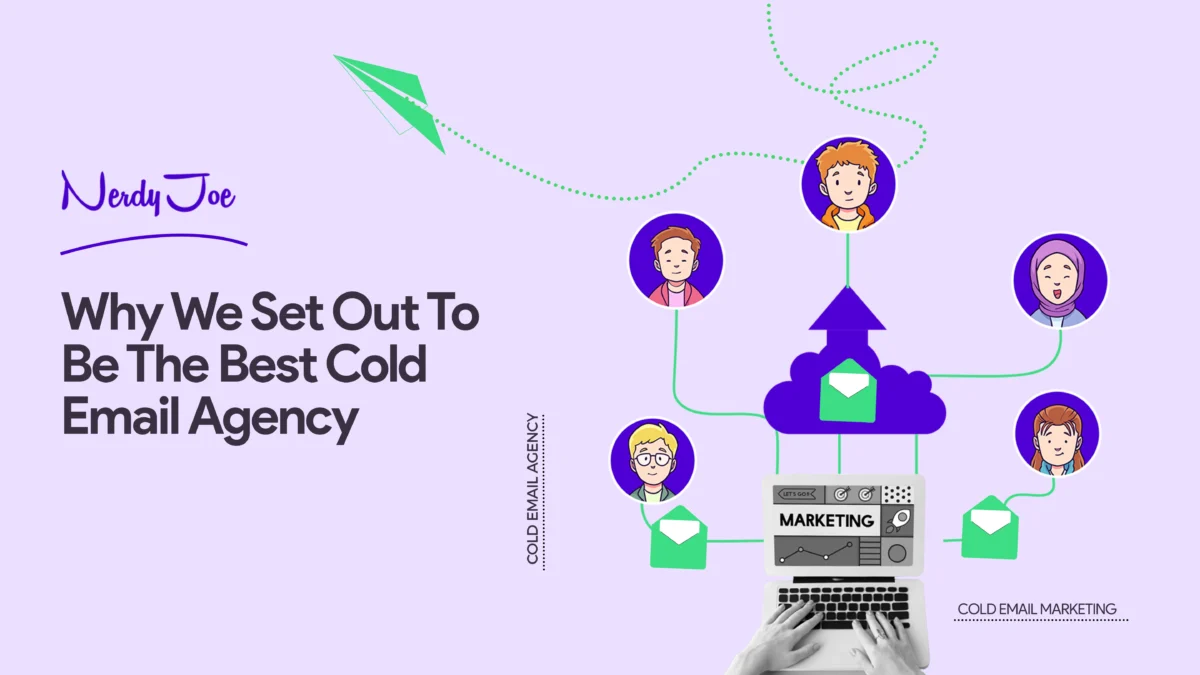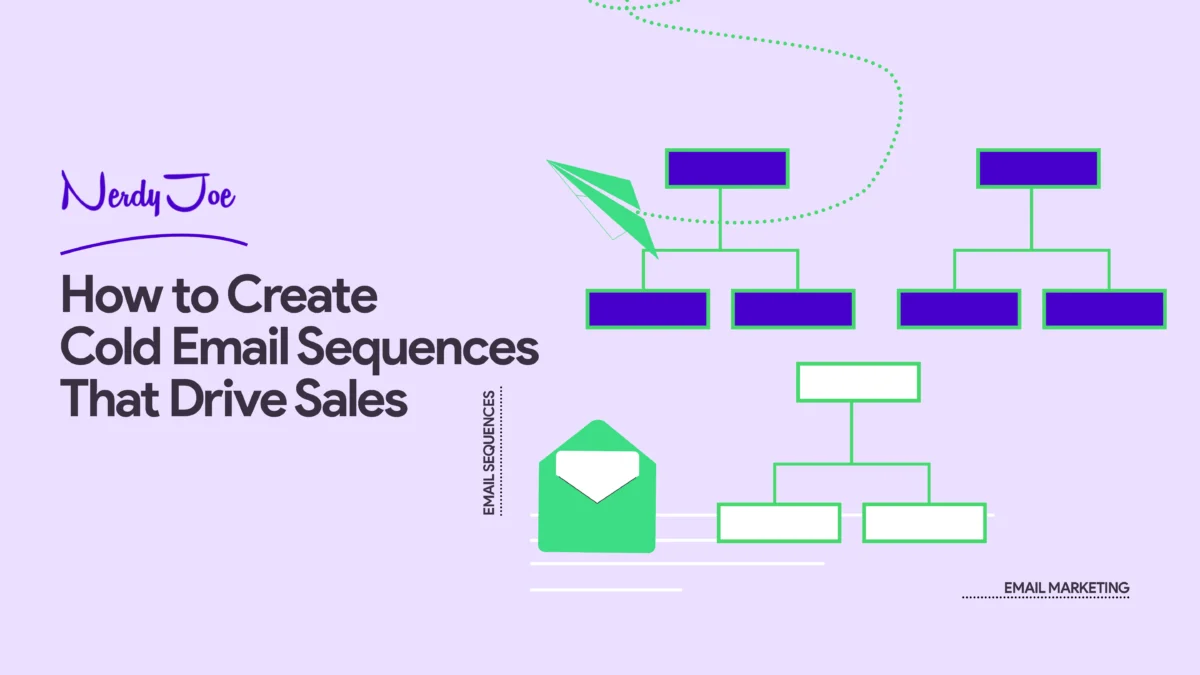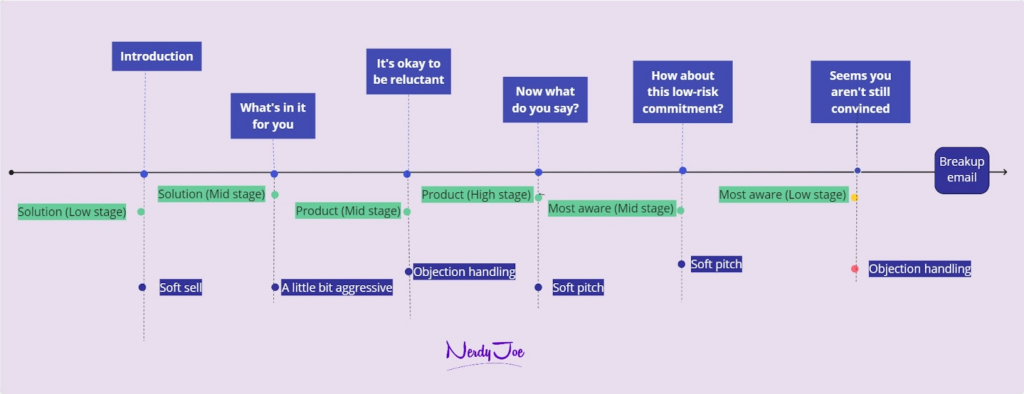Best Time to Send an Email: What Email Marketing Experts Think
When is the best time to send an email?
We’ve all faced this question at some point in our email marketing campaigns. Sometimes, the success of your email campaign can depend on aspects as haphazard and less considered as the sending time of your emails.
At Nerdy Joe, we’ve created and sent our fair share of email campaigns and marketing emails.
Today, we will combine our experience with the available data to pinpoint the best times and days for email marketers to send emails to target audience.
What are the best days to send emails?
Why you shouldn’t send your emails on Mondays and Fridays
Your marketing emails should be sent on days and at times when your recipients can take the time to read them and adequately engage with you.
Mondays and Fridays are simply not the best days of the week for this.
Here is why.
The first thing professionals do early during first day after their weekend is to deal with the countless emails waiting for them in their inboxes.
Emails from colleagues and information about the business or workplace are the highest priority.
Cold emails or emails from people reaching out to the prospect with an offer are considered less important, so they ignore them.
They are put on the back burner and most likely forgotten or lost in the chaos of emails in the prospect’s inbox. Your email marketing strategy simply won’t work at that time.
For Fridays, it’s pretty much the same thing. Depending on when you reach your email subscribers, they are either in the process of planning their weekend or they have actually left.
You are probably familiar with the Fri-Yay joke. It stems from the fact that most people are excited and looking forward to the weekend on Fridays.
They are super focused on checking off their to-dos so that they can open up and enjoy their weekends.
You don’t want your emails competing for attention in their inbox at these times. They are likely to ignore them or put them on hold — and forget you.
Why Tuesdays, Wednesdays, and Thursdays are the best days to send emails
Tuesdays and Thursdays are the best days for sending emails.
Both data and logic back this.
There are a lot of stats from Email Service Provider (ESPs) companies, including GetResponse, CampaignMonitor, Klaviyo, Sendinblue, and more.
Here is a quick recap.
Klaviyo
Klaviyo analyzed 22,000 email marketing campaigns and tracked the open rates, click-through rates and revenue generated from those campaigns.
The highest open rates occurred on Tuesdays, Wednesdays, and Mondays.
Also, they’ve found that the highest revenues were generated on Thursdays and noted that opens were considerably low on that day.
People are more likely to check and read incoming emails earlier than at the end of the week. Also, they are more likely to make up their minds and make buying decisions on the last business days than they would earlier in the week.
Send educational emails earlier in the week and promotional and offer emails late during the week.
GetResponse
GetResponse sent out 4 billion emails to an audience of entrepreneurs, online marketers, and SMBs over five months. They sent 18% of all email campaigns on weekends and 17% on Tuesdays alone.
They recorded the highest click-through rates and open rates on Mondays and Tuesdays. They also found that the click-to-open ratios were the best on Weekends.
The high openings recorded on the weekends stem from the low competition on those days. Though, to send emails to professionals on weekends may not always be ideal.
Still, GetResponse results align with Klaviyo in that people best check out and read emails early in the week.
Sending emails on weekends may be tempting. But no, we would advise you to avoid sending emails on those times. On a better note, you can send your emails early on in the week and expect great results.
Campaign Monitor
CampaignMonitor examined more than 30 billion emails and email marketing campaign sent by subscribers from 171 countries, primarily small to medium-sized firms.
Overall, they recorded the best and highest open rates on Tuesdays. They drilled down on the results and separated them per industry.
The new findings indicated that businesses in the advertising, marketing, travel, and leisure industries had the best open rates on Tuesdays.
These were followed by businesses in the healthcare, food, and beverage industries which recorded the best open rates on Wednesdays.
Lastly, they observed that businesses in the education industry have an excellent open rate on Sundays.
Tuesdays and Wednesdays are great days to get maximum openings in most industries. We can also understand that the overall email engagement rates differ from one industry to another.
Sending emails in the middle of the week, ideally on Tuesdays and Wednesdays is an effective way to ensure high opens to your email campaigns.
Moosend
Moosend analyzed 10 billion emails sent by their customers through their platform.
They found the best day to send emails to be Thursday because they recorded their highest opens on Thursdays.
People are also more likely to read their emails on Thursdays. This can be explained by the fact that they’ve already taken the early days to focus on essential parts of their business.
By Thursday, they’ve freed up sometime or already have their entire week figured out. This makes them more receptive to emails from other people and cold messages from marketers and sales reps.
It is also a great idea to wait for the earlier days of the week before sending your emails.
Or even better, if you are sending a cold email sequence or an email campaign, you can send different touches across Tuesdays and Thursdays.
Sendinblue
Sendinblue conducted several email timing studies across different industries. They mainly tracked the opens and clicks rates along with the engagement volumes across several days.
In a nutshell, they found that Tuesdays, Wednesdays, and Thursdays are the best days to send emails, with the edge going to Tuesdays and Thursdays.
The research shows the three days have the highest open and click-through rates.
Wednesdays have an excellent engagement volume, but it is lower compared to Tuesdays and Thursdays.
Weekdays tend to have more engagement compared to weekends.
Regarding click volume and engagement, Tuesdays and Thursdays are the best.
Send your emails across Tuesdays, Wednesdays, and Thursdays. These are the best days to reach out to your recipients and see significant campaign engagement results.
Research data from different email SaaS companies serving different audience segments in different industries have shown that the best days to send your emails are Tuesdays and Thursdays — and occasionally Wednesdays.
The main idea is that you should always send educational emails early in the week. Not too early when your prospects are sorting out business issues or catching up on the previous week’s activities.
It needs to be on Tuesday. The meetings, email swaps, and, most important, discussions are already over by then. This makes people more receptive to third-party emails like yours.
Promotional emails are best sent on Thursday. This is a good day to send them because prospects have already processed business emails and done much of their work for the week.
In other words, they’ve already checked off most of their weekly tasks and are more likely to consider, make up their minds and respond to offers.
If you plan to send a sequence of cold emails, we recommend sending the first contact email on Tuesday and the second the following Thursday. You can then spread the other emails over Tuesdays, Wednesdays, and Thursdays.
What happens during the other days of the week (Saturday and Sunday)
It is a known fact that online activity decreases dramatically on weekends. Most professionals and people generally prefer to spend time with their families and not check their emails on weekends.
However, a large number of people do check their email on the weekend.
According to Statista data, 43% of white-collar workers reported checking their work email every few hours outside their regular work hours, and 10% reported checking it all the time.
For us, whether you should send your emails on weekends, Saturdays and Sundays will depend on who you are targeting, the purpose of the email, and the relationship between the two of you.
Let’s expand on that.
Targeting B2B professionals (e.g., directors, execs, vice presidents, sales managers, etc.)
We recognize that some professionals who haven’t had time to check all their emails during the week may be tempted to do so over the weekend.
Also, it may make sense after all. Since most marketers look for the best days to send their emails, sending your emails on days when no one is sending emails may seem like a great way to get a good number of opens and clicks on your emails.
But those aren’t good enough reasons to email professionals on the weekend.
Here’s why.
First, professionals typically don’t work on weekends and are unlikely to check their emails. Also, sending sales emails, marketing emails, and any other kind of cold emails to your prospects on the weekend is not professional.
It’s the quickest way to damage your reputation and be labeled an “annoying marketer.” People will hate you and your emails.
Targeting a B2C audience (e.g., online shoppers, end consumers, the general public, etc.).
In this context, sending emails to your recipients can be a good idea. For example, Sunday or even Saturday are prime times for online shopping. The weekend can be an interesting day if you are in the direct-to-consumer business.
Yet, it is difficult to determine whether the weekend is ideal. Many people ignore their emails to relax. Therefore, we recommend that you create and send one-off offer emails. This could be effective without annoying your potential customers.
We also recommend that you don’t make a habit of sending emails or launching email campaigns on the weekend. It is simply not appropriate.
You need to think about who your targets are. Ask yourself how they would react if they constantly receive emails on the weekend.
What is the best time to send an email during the day?
We’ve already cleared that the best days to send your emails are Tuesdays and Thursdays — and occasionally Wednesdays. That’s what both data and logic indicate.
So, now what is the best time to send an email during the day? At what day hours should you send your emails for the best openings and engagement results?
The short answer is anywhere between 10 am and 11 am. Research data from Intercom corroborates this.

Source: Intercom
But as you can tell, there is more to it. So, to be thorough, we’d like to pull data from different email SaaS companies analyzing several email marketing campaigns in a table and draw the conclusions together.
Sendinblue
The Sendinblue team conducted several email timing studies across multiple industries. Specifically, they looked at the opens and clicks throughout the day and recorded the highest engagement hours.
They found interesting results across different sectors. But first, they pointed out two times of the day that are good to send emails and expect excellent results. The times are 10 am and between 3 and 4 pm.
First, Sendinblue pointed out two times of the day that are good for sending emails and getting amazing results. The times are 10 am and between 3 and 4 pm. Sendiblue’s study went a step further and broke their results per industry.
- SaaS: 2 pm-3 pm.
- Hospitality and Online Retail: 8 am-10 am.
- Nonprofits: 3 pm-4 pm.
- Professional services (B2B): 8 am-10 am.
- Marketing services: 4 pm.
- e-commerce: 10 am.
For morning outreach, send your emails around 10 am. Anywhere between 8 am and 11 am may work just as well. For the afternoon, send your emails between 3 and 4 pm.
Omnisend
Omnisend analyzed more than 2 billion email marketing campaigns sent using its platform to understand and determine the optimal campaign timing.
Ominsend recorded the highest open rates between 8 am and 10 am. The click-through rate was high during that time as well. But the order rate was notably low during that time.
1 pm didn’t come highest on any metrics but has proven to be an excellent time to send emails.
At the same time, 4 pm brought the most increased orders, and 5 pm displayed the highest click-through rates.
While people might be open to opening and reading emails in the morning, they might not be inclined to make up their minds and decide then. They’re more likely to make decisions later on during the day.
Send educational emails in the morning and promotional emails later during the day or in the early evening.
Intercom
Intercom focused on analyzing its data on business to business audiences to see at what time of the day B2B officials mostly react to emails and in-app messages.
First, they observed that responses to in-app message platforms were almost spontaneous. But on the other hand, they found that emails recorded the highest opens between 10 am and 11 am.
This comes as no surprise as it is common for people to check their inbox first, then read and respond to specific emails by order of importance over the course of the day.
Sending your emails in the morning guarantees that your prospects will take the time to check you out as they do their email inbox checking routine.
The key takeaway from all the studies is that you should seek to send your email moments before people mostly check out their inboxes.
People routinely check their inboxes before they start working in the morning, when they get back from lunch break, and in the evening before they leave.
So, if we were to pinpoint specific times to send emails, your best bet should be between 9 and 11 am for the morning and between 3 and 4 pm for the afternoon.
Also, studies have shown that people mostly read emails in the morning but are the least likely to make decisions during that time. Alternatively, they are more likely to make decisions later during the day.
Therefore, we recommend you send education emails in the morning and send order, sales emails later in the day. This will give you a better chance of having your messages opened, read, and acted upon.
The best days and times we send our emails at Nerdy Joe
Here is what our CEO thinks when asked about the best day and time to send emails. Understand that this is based on his personal experience and the performance of our diverse campaigns for our clients.
“I’ve noticed that Tuesdays have a very high open rate (60-85%) and Fridays have a very high click-through rate (15%).
On Mondays, the open rate is not bad, but it is not very good either. It’s just normal (40-50%). On Mondays, the click-through rate is very low.
I’ll explain this as follows:
Most of the people on my list are directors or vice presidents. Because of their job, they use Mondays to read their emails, catch up on the previous week and prepare for the new week.
As a result, they spend very little time on unimportant tasks such as answering non-work-related emails.
On Tuesdays, they have a little more time and are more relaxed. This explains the high opening rate. I’m successful when I send my emails between 9 am and 2 pm and between 5 pm and 7 pm East Coast time.
On Fridays, they usually end the week and have greatly reduced their workload. This gives them more time to interact with the content of the emails. This explains the incredible click-through rate.“
Ernest Bogore, Email Marketing Wizard at Nerdy Joe.
4 tips to improve your email open rates and click through rates
The best time to send an email is not all you need to get right to improve your email marketing campaigns engagement.
A lot of other email components (e.g. subject lines, mobile friendly, time zones, geographical locations, etc.) can also impact your campaign’s performance.
So, here are a few tips to achieve the highest engagement rates.
1 – Write irresistible subject lines
These are the first elements your email subscribers see after receiving your email campaigns. Even if you send your emails at the right time, people will skip it if the subject does not look click-worthy.
The average people rely on the subject line alone to decide whether or not to open your marketing emails.
Here a few ways to improve it.
- Make it interesting: Will you ask an intriguing question? Create a sense of urgency? Talk about benefits? Make an allusion to a story? Make it interesting and they will be interested.
- Leverage curiosity: Curiosity calls fo action. It intrigues your target audience to want to check out want you want to say.
- Avoid being obvious: You should give them something that makes them want to check out the email by making it interesting.
- Personalize it: Emails with personalized subject lines are 22% more likely to be opened. Make the subject line specific to your prospect and capture their attention.
- Keep it short: Long subject lines never do well. Keep the device your target audience uses in mind and ensure your subject line does not get cut off for being too long on a mobile device.
2 – Consider the time zones
It’s one thing to get the best time to send an email marketing campaign right, it’s another thing to get right timing in your recipients’ area to achieve the desired impact.
The peak time in one location may be lunch breaks else where, the best day of the week in your area may not not have arrived elswere.
Sending your emails without considering your recipients’ time zone is the same as sending it at the wrong time.
So, always consider you subscriber list, segment the audience based on geographical locations and send your emails accordingly.
3 – Segment and personalize your email
If you send too few emails, you’re probably fine. But if you send email blasts to a huge audience, you will suffer with email engagement metrics such as the click to open rate, conversion rates, etc.
Even if you search and find the right time to send your marketing, you can still struggle to keep your email engagement above board.
So, reseach your customers and find commonalities between them. Segment them into groups based on user habits, and any other relevant factor and send marketing emails accordingly.
You can also set custom variables and attributes per recipients to personalize and send email campaigns right inside your ESP.
4 – Shape your emails for mobile devices
As a general advice, always shape your emails for mobile devices.
Data shows that 60% of email campaigns are read on mobile, 29% on webmail, and only 10% on desktops, optimizing emails is definitely worthwhile.
Simply put, most people check and read with emails using their mobile device, so you stand a better chance for the highest open rate.
Best time to send email: FAQs for email marketers
Here are a few frequently asked questions about the best time to send an email campaign.
What is the best day and time to send an email?
If you are sending educational emails, the best day and time to send them is Tuesday between 9 and 11 am. If you are sending a promotional email, the best day and time to send the email is Thursday between 3 and 4 pm.
How frequently should emails be sent out?
The best days to send emails are Tuesdays and Thursdays.
So, ideally, you should seek to plan your campaigns to go off on those days. That gives you an excellent frequency to send your email without being too intrusive.
What is the ideal weekly email frequency?
You should send no more than three emails per week. 2 are perfect. 3 is the maximum you should send.
Sending more than three emails per week will make you across as annoying, and people will hate receiving emails from you.
Is it better to send an email at night or in the morning?
You shouldn’t send emails at night. It’s not professional; no worker checks their inboxes at night, and it might get lost in the flood of emails your recipient will get in the morning.
Sending your emails in the morning, around 10 am, is ideal.
What is the best day to send emails?
The best day to send emails is between Tuesday and Thursday. Research indicates that you should send promotional emails on Thursdays and educational emails Tuesdays.
You can program you cold emails and email marketing campaigns to go on those times.
What is the best time to send emails?
The best time to send emails in the morning is between 9 am and 11 am, and the best time for sending emails in the afternoon is between 3 pm and 4 pm.
